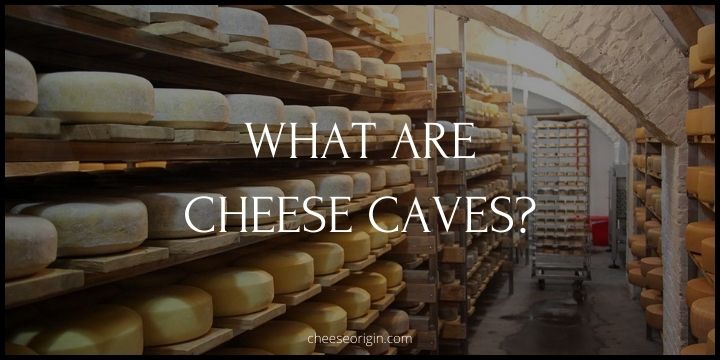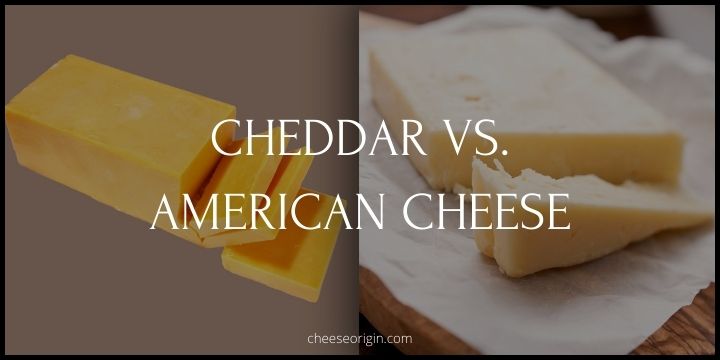Savor the Flavor: 20 Cheeses with the Least Lactose

For those who are lactose intolerant, the thought of giving up cheese can be daunting. After all, it’s a staple ingredient in so many beloved dishes, from pizzas and pastas to salads and sandwiches.
But here’s some good news: not all cheeses are high in lactose. In fact, there are several types that contain minimal levels of this milk sugar, making them more digestible for those who have trouble processing lactose.
In this post, we’re going to explore 20 cheeses that are lower in lactose, perfect for those who want to enjoy the rich, creamy taste of cheese without the discomfort that can come with it.
Also read: What’s the Difference Between Cheddar and American Cheese?
Top 20 Cheese with the Lowest Lactose
Please note that lactose content can vary depending on the specific product and brand.
Also, the exact lactose content of these cheeses is often not specified by manufacturers, so they are listed in no particular order.
| Cheese | Lactose Content (%) | Facts |
|---|---|---|
| Muenster | 0 – 0.11% | This cheese is smooth and mildly flavored. |
| Camembert | 0 – 0.11% | A soft, creamy cheese with a bloomy rind. |
| Brie | 0 – 0.11% | Known for its creamy texture and mild flavor. |
| Provolone | 0 – 0.11% | An Italian cheese with a smoky flavor. |
| Gouda | 0 – 0.11% | A Dutch cheese known for its rich, nutty flavor. |
| Colby | 0 – 0.11% | A semi-hard American cheese with a mild flavor. |
| Mozzarella | 0 – 0.11% | A popular Italian cheese used extensively in cooking. |
| Monterey Jack | 0 – 0.11% | This American cheese is known for its mild flavor and smooth texture. |
| Feta | 0 – 0.11% | A crumbly Greek cheese with a tangy, salty flavor. |
| Goat Cheese | 0 – 0.11% | A creamy, tangy cheese made from goat’s milk. |
| Swiss | 0 – 0.021% | Known for its distinctive holes and nutty flavor. |
| Parmesan | 0 – 0.021% | A hard, granular cheese with a strong flavor. |
| Cheddar | 0 – 0.021% | Aged cheddar is particularly low in lactose. |
| Blue | 0 – 0.11% | This cheese is notable for the blue or green veins of mold running through it. |
| Gruyère | 0 – 0.11% | A hard Swiss cheese with a sweet, nutty flavor. |
| Roquefort | 0 – 0.11% | A blue cheese from France known for its strong flavor. |
| Manchego | 0 – 0.11% | A Spanish cheese made from sheep’s milk. |
| Pecorino Romano | 0 – 0.021% | A hard, salty Italian cheese, similar to Parmesan. |
| Jarlsberg | 0 – 0.11% | A Norwegian cheese similar to Swiss, but sweeter. |
| Emmental | 0 – 0.021% | A Swiss cheese known for its large holes and nutty flavor. |
All these cheeses have a relatively low lactose content due to the process of aging, which breaks down lactose.
The rule of thumb is: the older the cheese, the lower the lactose.
So, if you’re lactose intolerant, these cheeses might be easier for you to digest. However, it’s always best to consult with a healthcare professional before making any significant changes to your diet.
What Soft Cheese is Lactose Free?
The truth is, it’s difficult to find a completely lactose-free soft cheese, some are very low in lactose and may be suitable for people with lactose intolerance or sensitivity.
These include:
- Brie: This is a soft cow’s milk cheese that is low in lactose due to its aging process.
- Camembert: Similar to brie, camembert is a soft cheese that has a low lactose content.
- Mozzarella: It’s a semi-soft cheese that is lower in lactose compared to other soft cheeses.
- Goat cheese: Cheeses made from goat’s milk tend to have less lactose than cow’s milk cheeses, and soft goat cheese is no exception.
- Blue cheese: While not everyone enjoys the tangy flavor of blue cheese, it’s another soft cheese option that’s low in lactose.
- Feta: This crumbly cheese is often made from sheep or goat’s milk, which naturally contains less lactose than cow’s milk.
What Caused Lactose Intolerance?
Lactose intolerance is a common digestive disorder where the body is unable to fully digest lactose, a sugar found in milk and dairy products. This condition is caused by a deficiency of an enzyme called lactase, which is produced in the small intestine1.
Lactase breaks down lactose into two simpler forms of sugar: glucose and galactose, which can then be absorbed into the bloodstream. People with lactose intolerance don’t produce enough lactase, so lactose stays in the digestive system where it ferments, producing gas and making people feel unwell.
The causes of lactase deficiency and, therefore, lactose intolerance, can be categorized into three types:
1. Primary Lactase Deficiency:
This is the most common cause of lactose intolerance worldwide. It develops over time and begins after about age 2 when the body starts to produce less lactase. Most children who have lactase deficiency do not experience symptoms of lactose intolerance until late adolescence or adulthood.
2. Secondary Lactase Deficiency:
This form of lactase deficiency is often the result of an injury to the small intestine. It can occur with intestinal diseases such as celiac disease, inflammatory bowel disease, or Crohn’s disease, or with chronic alcoholism, or as a result of certain kinds of stomach surgery.
3. Congenital or Developmental Lactase Deficiency:
This is a rare condition in which infants are born with little or no lactase. This condition is passed from generation to generation in a pattern of inheritance known as autosomal recessive.
Cheese to Avoid When You Are Lactose Intolerance
Here are some types of cheese that typically have higher lactose content and may need to be avoided:
- Cottage Cheese: This type of cheese is known to have a higher lactose content compared to other cheeses.
- Ricotta Cheese: Similar to cottage cheese, ricotta also has a significant amount of lactose.
- Cheese Spreads: These often contain milk or other dairy products that increase the lactose content.
- Processed Cheese: These cheeses, including American cheese, often have added milk or whey, increasing the lactose content.
- Cheese Foods: These are not real cheese but are made from cheese along with other ingredients, including dairy products, which can add to the lactose content.
- Mascarpone: This is an Italian cream cheese, which is high in lactose.
How to Still Enjoy Cheese When You’re Lactose Intolerance
Even if you’re lactose intolerant, you can still enjoy cheese by selecting ones with a low lactose content or using lactose-free alternatives.
- Choose Hard Cheeses: Hard cheeses like those mentioned above such as Cheddar, Swiss, and Parmesan have less lactose than soft cheeses. They’re often well-tolerated by people with lactose intolerance.
- Try Aged Cheeses: Aged cheeses like Gouda, Brie, and Camembert are also lower in lactose. The aging process reduces the lactose content of the cheese.
- Opt for Cheese Made from Goat’s or Sheep’s Milk: These types of cheeses, including Feta and Manchego, often contain less lactose than those made from cow’s milk.
- Use Lactose-Free Cheese: There are many lactose-free cheese options available on the market. They’re made from real milk, but the lactose is removed. These include lactose-free versions of cheddar, mozzarella, and other popular varieties.
- Eat Cheese with Other Foods: Consuming cheese as part of a meal can slow the digestive process and may help reduce symptoms of lactose intolerance.
- Consider Lactase Supplements: These can help break down lactose, making it easier to digest dairy products including cheese.
Keep in mind that everyone’s tolerance to lactose is different, and some people with lactose intolerance may still be able to consume small amounts of these cheeses without experiencing symptoms. It’s always best to pay attention to your body and consult with a healthcare professional if you have questions about your diet.
Frequently Asked Questions
1. Is All Cheese Naturally Lactose Free?
No, not all cheese is naturally lactose-free. Lactose is a sugar found in milk and therefore, also in cheese.
However, during the cheese-making process, most of the lactose is drained off with the whey (the watery part of milk). The small amount that remains in the curd, which is used to make cheese, often breaks down over time as the cheese ages.
Certain types of cheese contain less lactose than others. Hard, aged cheeses like Cheddar, Parmigiano Reggiano, and Swiss are known to have low levels of lactose. Some brands, like Cabot, offer cheddar cheese that is naturally lactose-free.
Soft, fresh cheeses, on the other hand, usually contain more lactose and might cause issues for people with lactose intolerance. This includes cheeses like cottage cheese, cream cheese, or ricotta.
However, there are exceptions. For instance, some types of feta and mozzarella are lower in lactose compared to other soft cheeses. And certain goat cheeses also have less lactose than cheeses made from cow’s milk.
There are also cheeses made from lactose-free milk, such as those produced by Dodoni in Greece and Coolamon Cheese in Australia.
Remember, individual tolerance to lactose can vary greatly. If you’re lactose intolerant, it’s a good idea to consult with a healthcare professional before making any significant changes to your diet.
2. Is feta Ok for lactose intolerant?
Yes, Feta cheese is typically a good option for those who are lactose intolerant. This is because it’s made primarily from sheep or goat’s milk, which naturally contains less lactose than cow’s milk.
3. Is there lactose-free mozzarella?
Yes, there are lactose-free mozzarella cheeses available in the market.
For instance, Galbani® offers a Lactose-Free Mozzarella that has the same qualities as their Whole Milk Mozzarella but without the lactose.
Another brand, Green Valley Organics, also provides a lactose-free shredded mozzarella.
Moreover, mozzarella cheese naturally contains almost no lactose. Just one ounce of mozzarella provides around 0.3 grams of lactose, which is significantly less compared to milk that contains 12-13 grams of lactose.
For those looking for dairy-free alternatives,
Violife and Moocho Dairy-Free Mozzarella Style Shreds is a popular choice in the dairy-free and vegan community
Also, Buf Creamery offers a mozzarella made from 100 percent water buffalo milk, which they claim to be lactose-free.
Conclusion
Thanks to advancements in food technology and the growing demand for lactose-free products, there are now even more options on the market, including lactose-free versions of your favorite cheeses and dairy-free alternatives.
Remember, everyone’s tolerance to lactose is different. What works for one person may not work for another. Always consult with a healthcare professional or dietitian if you’re unsure about introducing new foods into your diet.
Embrace your culinary journey and don’t let lactose intolerance hinder your love for cheese.
With careful selection and mindful consumption, you can savor the flavors of many glorious cheeses without discomfort. Enjoy the exploration and delight in discovering that the world of cheese is indeed, your oyster.
Also read:
- Best Wine and Cheese Pairings: The Ultimate Guide
- The Science of Cheesemaking: A Journey from Milk to Artisanal Delight
- What Kind of Cheese is Used on Nachos?
- What Pairs Well with Cheddar: The Ultimate Guide
- 12 Most Popular Cheeses in the World
- What Fruit Goes on a Charcuterie Board?
- 11 Best Crackers that Pair Well with Cheese





